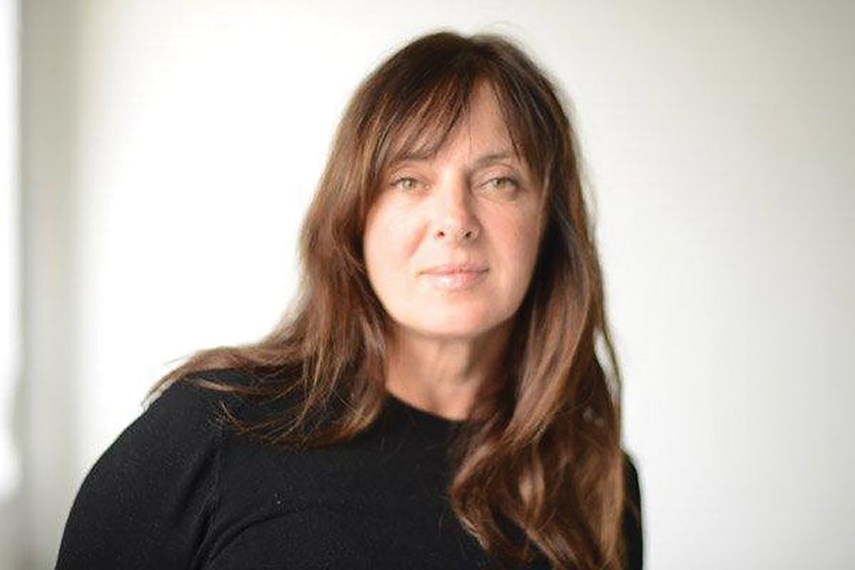I used talcum powder recently as dry shampoo; my husband used it to prevent chafing when he went cycling.
Worst of all, I used talc – “baby powder” – on my kids. I remember vaguely hearing that it might not be good for them, but the message didn’t seem that urgent and was buried under so many other childhood warnings that I didn’t follow through.
“Me too, you’re not alone,” Phyllis Ellis reassures me. Ellis’ new film, Toxic Beauty, is a wake-up call for all of us who are complacent about the chemicals in the products we use on a daily basis. Initially the filmmaker was approached about doing a feature relating to green cosmetics companies; the starting point in her research was the potentially deadly use of talc in products.
Ellis is a former Olympian: she represented Canada in field hockey in the 1984 games. She and her teammates used baby powder, of which Johnson & Johnson is the leading manufacturer, extensively. “We used it like heroin,” she admits, “we poured it everywhere all the time.” A few of the women developed ovarian cancer, and it made Ellis wonder if she too was at risk. “I thought: if the most trusted brand in the world is linked to ovarian cancer, what else is causing us harm?”
Plenty, as it turns out.
Her focus widened to include the $532 billion beauty industry, largely unregulated in the U.S. and laxly enforced in Canada, according to the filmmaker. The U.S. hasn’t enacted new personal care laws since the 1930s. It’s a crisis likened to the use of tobacco; worse, according to Rick Smith, Canadian author of Slow Death By Rubber Duck: the cosmetics issue “is even bigger than the tobacco industry because we’re talking about thousands of different chemicals.”
But we are loath to admit that the shampoos, moisturizers, cosmetics, feminine products and sunscreens that we use on a daily basis might be doing us harm, and even more resistant to giving them up. “For sure,” says Ellis, “it’s conditioning for all of us. It’s really hard when somebody, some group, tells us what we’re doing is wrong … People get pissed off because you’re going near something that they enjoy and is part of their social paradigm.”
The Gemini and Canadian Screen Award-winner had to scrutinize her own product usage and now has three things in her cosmetics bag. “It took me a while. I had to let go of little things: I had this bottle of oil, this beautiful scent that I had. I wore it every day, even though I knew it wasn’t organic and natural.” But it’s not worth it, she says. These are elective products, they’re not like an antibiotic, and not using them won’t kill you.
The film features dozens of interviews with toxicologists, endocrine experts, women’s health advocates, lawyers, cancer survivors and people who succumbed to the disease.
Mymy Nguyen is a 24-year-old breast cancer survivor, Boston University medical student, and “uses more products than the Kardashians.” She is the subject in her own experiment about the levels of chemicals in personal care and beauty products; it doesn’t take long for her to see the results.
Dr. Daniel Cramer is an epidemiologist at Harvard. He was the first to link Johnson & Johnson’s baby powder to ovarian cancer back in 1982. Documents show that the company knew about the link as far back as the 1960s but continue to deny that their product is responsible. Deane Berg was the first to win a lawsuit against the pharmaceutical giant.
Dr. Bruce Lanphear works out of Simon Fraser University, an expert in fetal and early childhood exposure to neurotoxicants. This isn’t just a women’s issue: the chemicals in men’s products have been associated with rates of cancer and obesity, as well as low sperm count and infertility. Baby boys are especially at risk for hormonal disruption and developmental delays. “I used to bathe my kids, marinate my children in these toxic chemicals that were in baby shampoos, bubble bath while I read for an hour and a half,” she says. “No wonder all these kids have anxiety and depression.”
If we had listened in the late ’70s or early ’80s to the people on the fringes making noise about climate change, we may have been in a very different place today. Ditto the warnings about tobacco: “I was acutely aware that it took 30 years for people to accept that there was something in it (tobacco health warnings).” Ellis thinks now “is the perfect time” to raise the alarm about the unseen dangers in our daily skincare routine.
With social media the demand for perfection is higher than it’s ever been. I ask Ellis how I can protect my 13-year-old daughter – an avid watcher of those YouTube makeup tutorials and on the cusp of wearing makeup herself – from potential harm. First, not all chemicals are bad, she says: look at the back of a bottle and if it says fragrance and parfum, don’t buy it. “’Fragrance’ can contain 125 different chemicals and we don’t know what they are and the company doesn’t have to list them.” Do your homework and seek out clean brands instead. Next, says Ellis, “we need to say to our government, ‘we don’t want this on anything we’re using’. All we need to do is ask, that’s their job.”
And ultimately it all comes down to the unrealistic beauty standards by which we judge ourselves, that pressure to be thinner, lighter-skinned, blemish-free, younger. “As we are we’re not enough, that’s the hard part. I don’t know the answer to that one.”
Toxic Beauty had its world premiere at Hot Docs Documentary Film Festival in Toronto, followed by screenings at DOXA Documentary Film Festival in Vancouver in May. It’s currently playing at Vancity and screens at select theatres in the Lower Mainland Sept. 9.



